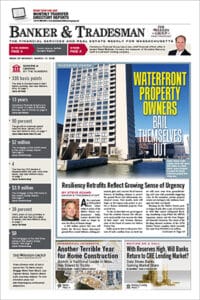
Lily Linke
Do you wish your college-age kid could return to their hometown and live in their first apartment near you? Are you hoping to build an accessory dwelling unit so your aging parents can downsize and live next door? Would you love to get to work, school, stores and recreation on foot? Unfortunately, in many communities today, restrictive zoning has impeded these opportunities for their residents, with dire consequences.
In local government, zoning codes are moral documents. By setting rules for what can be built and where, zoning determines who can live, work and play in our communities. It is one of the most powerful tools we have to meet our goals for housing, transportation, climate and diversity.
In much of Massachusetts today, our zoning leaves many people with low incomes, young people, people of color, older adults and people with disabilities with limited options when choosing a place to call home. Even those with moderate incomes are often priced out of the market.
With the new MBTA Multifamily Zoning Requirements, sometimes also called “Section 3A,” our communities have the opportunity to change this course and make meaningful improvements in the lives of their current and future residents and the overall health of their neighborhoods.
Many Massachusetts communities have stringent and inflexible zoning that has made it illegal or impossible to build anything other than a single-family home. This pushes out people who can’t afford a single-family home as well as people who want to live in multifamily housing.
Just like in nature, healthy housing ecosystems need diversity – of housing types, jobs, activities and people. By building homogenous communities that consist almost entirely of single-family homes and those who can afford to own them, we jeopardize the health and longevity of the places we call home.
Painfully High Home Prices
Restrictive zoning creates excessive barriers to addressing our housing shortage, and when there is only so much housing to go around, prices will naturally skyrocket. With a median home price of $652,000, only 1 in 12 residents in the Boston metro area has the annual income needed to buy a typical home.
While high housing costs affect all of us, the consequences are particularly severe for homebuyers of color. In September 2022, only 2,100 Black households and 4,700 Hispanic households in Greater Boston earned high enough incomes to afford the typical home, down 65 percent and 61 percent respectively since September 2021. The racial homeownership gap remains high and concerning, with 70 percent of white households in Greater Boston owning their home, compared to 37 percent of Black households and 31 percent of Hispanic households.
For renters, cost burden has increased across almost every Greater Boston municipality, meaning more renters are paying more than 30 percent of their income on housing than ever before. As more of their incomes are allocated towards housing costs, renters are faced with difficult decisions about where to cut costs in other aspects of their lives, from childcare to medical costs and other necessities.
Single-Family Housing’s Carbon Cost
Residents seeking more affordable housing options are forced to move further away from their jobs, causing them to spend more time driving. A 2022 study found that Boston ranks second in the country and fourth in the world for the worst traffic, with drivers spending an average of 134 hours stuck in congestion every year. This is precious time that could be spent with family and friends, enjoying hobbies and participating in civic engagement.
Transportation is the greatest source of CO2 emissions in the United States, making up 27 percent of overall emissions, so cutting back on personal vehicle trips is an essential part of meeting our climate goals. Building housing near transit makes it possible for future residents to live without a car, which could save them upwards of $10,000 a year, according to AAA Northeast.
Legalizing the production of multifamily housing near transit is a critical first step towards addressing our housing shortage, stabilizing home prices and rents, lowering our carbon emissions, connecting housing to economic opportunity and making our communities more diverse and inclusive.
Why Comply?
The MBTA Communities multifamily zoning requirements expand our opportunities to create the type of housing we want and need. Each municipality has its own unique circumstances, so Section 3A creates space for communities to tailor these requirements to their individual community context and planning goals.
Our communities need more homes. Without them, many of our neighbors and businesses will struggle to stay, threatening what makes our neighborhoods great. We all have the shared responsibility to say yes to the future. Who do we want to be in 20 years? Do we want our communities to be places where educators, firefighters and small business owners can plant their roots? Do we want thriving Main Streets? Do we want to provide quality services to our residents?
In Massachusetts, we flourish when the neighborhoods, villages, and towns we love flourish. To ensure the future of the places and people we love, we must create housing opportunities that enable all of us to thrive. Let’s capitalize on this moment and the opportunity provided by the MBTA Communities zoning law to answer this call.
Lily Linke is the MBTA Communities Engagement Manager at Citizens’ Housing and Planning Association (CHAPA).





